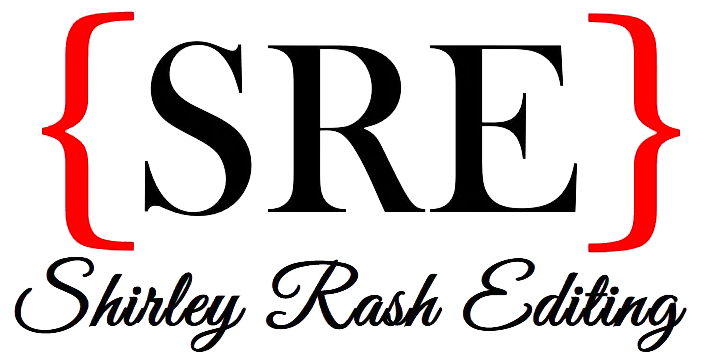Last time, we talked about higher-order concerns—all those big-picture aspects of a manuscript, such as organization, theme, argumentation—but this time we’re looking at the editing services that address lower-order concerns. Essentially, these are any and all sentence-level issues: style, grammar, punctuation, spelling, etc.
As I mentioned in my last post, when I worked at a college writing center, most of our student clients were far more interested in getting feedback on lower-order concerns than higher-order concerns, so we often had to guide them toward seeing the value in talking about things other than commas. We certainly talked about rogue commas, too, but not at the expense of larger issues in their papers.
I’ve not personally encountered this issue as an editor. Most of the authors I work with are well aware of how valuable it is to receive feedback on both higher-order and lower-order concerns and don’t need to be convinced of the merits of either one. They’re more likely to be unsure of exactly what each service entails and when they need it.
It can be a little overwhelming to wade through, so this post is going to talk about the two most common ways editors address lower-order concerns in manuscripts—line editing and copyediting.
What is the difference between line editing and copyediting? (the short answer)
The basic difference is line editing is concerned with polishing style while copyediting instead addresses matters of correctness. A line edit is going to help you ensure that your prose is as tight and clear as it can be. A copyedit is going to help you with ensuring your grammar, punctuation, spelling, and formatting is correct.
What is line editing? (the long answer)
When you’re reading some of your favorite authors, do you ever find yourself admiring their sentences as sentences? I’m personally not a fan of writers who are ostentatious with their style, but I do admire writers with an ear for an elegant turn of phrase and an eye for effective construction. For my money, Truman Capote is one of the best stylists in American literature, and it always seems so effortless for him.
His opening line in In Cold Blood is justifiably famous: “The village of Holcomb stands on the high wheat plans of western Kansas, a lonesome area that other Kansans call ‘out there.’”
Read that aloud.
That’s a great sentence! He packs a lot into twenty-two words—it’s evocative and does a wonderful job of setting the scene and tone of the book. You can practically hear the lonesomeness of the high wheat plains and the foreboding in his words. You don’t have to be familiar with the rest of the book to know that, inevitably, in the course of this manuscript, something happens “out there.” In Cold Blood is the capstone of Capote’s career, but he was writing sentences like that even as a teenager in his earliest published work.
I’ve often found that prose writers who started off as poets (like Paulette Jiles) have equally lovely writing styles. Historians are sometimes stereotyped as having dry, ponderous styles, so I always notice when a historical nonfiction writer is also talented at writing good prose. I’ve been reading Philippe Sands’ and Ben Macintyre’s work lately and have found myself admiring their sentences more than once. Ditto for Jeff Guinn.
If you want readers to have the same reaction to your prose, consider hiring a line editor. They can help you with removing wordiness, repetition, and clichéd phrases and ensuring that you have clear, readable sentences with a variety of sentence types.
What is copyediting? (the long answer)
A copyeditor, meanwhile, is going to ensure that those lovely sentences aren’t riddled with errors and that there is consistency across your manuscript. The copyeditor is going to be focusing on your syntax, punctuation (incorrectly used or missing commas, semicolons, or colons; misplaced periods), spelling, and formatting.
That may sound like line editing is art and copyediting is science, but it’s more nuanced than that. Matters of grammar, punctuation, spelling, and formatting are not always clear cut, so a copyeditor will usually be editing your manuscript in accordance with a style guide. Like most American editors, I use the most recent Chicago Manual of Style and Merriam-Webster as my standard references when copyediting.
I think people often assume a copyeditor is only going to comment on things that are wrong, but I’ve found that a lot of my work as a copyeditor is simply enforcing consistency across a manuscript. Do you capitalize a certain word sometimes but not other times? Do you hyphenate it sometimes but not others? Do you write one character’s name as Ann sometimes and then Anne another time? Do you always or never use a comma in certain constructions? These can be errors, but they aren’t necessarily. Still, even when it’s not a matter of being right or wrong, it’s important for your manuscript to be consistent in these matters.
And sometimes the rules differ, depending on the style guide you’re using. The word copyediting itself is subject to this! I write it as copyediting because that’s what my Chicago Manual of Style and Merriam-Webster overlords do. But if you’re following AP Style (the style most commonly used by journalists), well, your overlords prefer copy editing. Neither one is inherently wrong. It’s just a matter of adhering to your style guide.
My favorite instances of how flexible copyediting can be are when a writer invents a word. There’s no rule there, so it’s up to the copyeditor to notice any inconsistencies in spelling, capitalization, or hyphenation in the word and work with the author on deciding what the rules are going to be and verifying they’re followed consistently.
Another significant aspect of copyediting is unseen in the final edit because it involves researching the issue and reaching the decision to not mark something. Sometimes, things that look like errors aren’t errors. Writers also break the rules intentionally. A good copyeditor is going to be able to distinguish between an error and a rhetorical decision to break a rule and know the difference between an error and a preference—or at least know when to query the author if they suspect this is what is happening in a sentence.
When should I have sentence-level editing done on my manuscript?
Line editing and copyediting should always be done after developmental editing. You want to ensure that the basic content is set before delving into changing sentences. Otherwise, extensive rewrites after you’ve had line editing and copyediting done risks additional errors being added. That just creates more work for you and your editor.
Should I have line editing and copyediting done at the same time or in separate rounds?
I think this is highly dependent on your personal preferences and the manuscript’s needs, as well as your editor’s preferences. Personally, I prefer to line edit as I copyedit. I notice line editing issues (like wordiness, redundancies, clichés, and clunky constructions) when I am copyediting, and it’s easier for me to just address both simultaneously. It’s hard for me to shut down that side of my brain when I am doing sentence-level editing, though I can if the client wants me to focus on only one. However, other editors prefer to handle line editing and copyediting in separate rounds and don’t want to have to deal with both of them at the same time.
Your goal for your manuscript and your own personal wishes are also important here. If you are especially concerned about the style of your manuscript or you are writing in a genre where the style is going to be emphasized (like literary fiction) or the style is important to you, then, yes, I think you should definitely consider doing a line edit first and then a copyedit. Otherwise, it might be just as logical and effective for you to have both done in the same round following developmental editing.
This is something I like to hash out with clients in our initial consults and when I do samples for them before being hired. If you specifically mention that the style of your prose is one of your concerns, I will definitely emphasize that even more than normal in my copyedit.
Do I still need copyediting if I am good at grammar?
Yes. Everyone benefits from copyediting. As I noted earlier, it’s not always a matter of fixing things that are wrong. In the American publishing world, manuscripts are expected to follow Chicago Manual of Style, and a good copyeditor can help you with this, as well as ensuring consistency.
Also, everyone makes mistakes. I’m not sure that there is a mistake-free piece of writing that exists, though a thorough copyedit will substantially reduce the number of errors in your work and improve its quality.
One of the reasons it’s so important to have someone else copyedit for you is that the longer you’ve worked on writing something, the closer you are to it, and the harder it will be for you to see those errors/typos/mistakes. An experienced copyeditor can make all the difference in the world. (Confession: When I reread my last blog post before writing this one, I caught two missing hyphens. Your editor is no more immune to this than anyone else, and this one really values having copyeditors for her own work for this reason.)
In the next installment of this series, we’re going to look at proofreading, which I suspect is the single most misunderstood editing service. It’s often used as a synonym for copyediting, but it’s really not! It is its own specialty.
Read the whole “What Is Editing” series:
- Intro
- Beta Reading
- Manuscript Critiques and Developmental Editing
- Line Editing and Copyediting
- Proofreading
- Citation Editing and Permissions Editing
- Author Coaching





